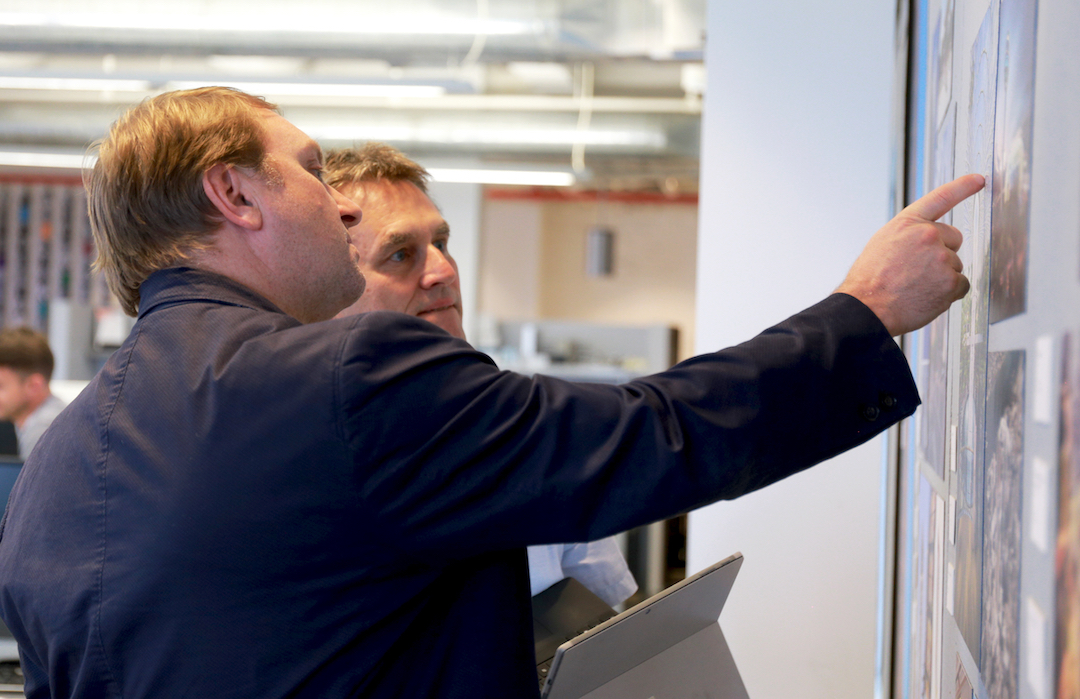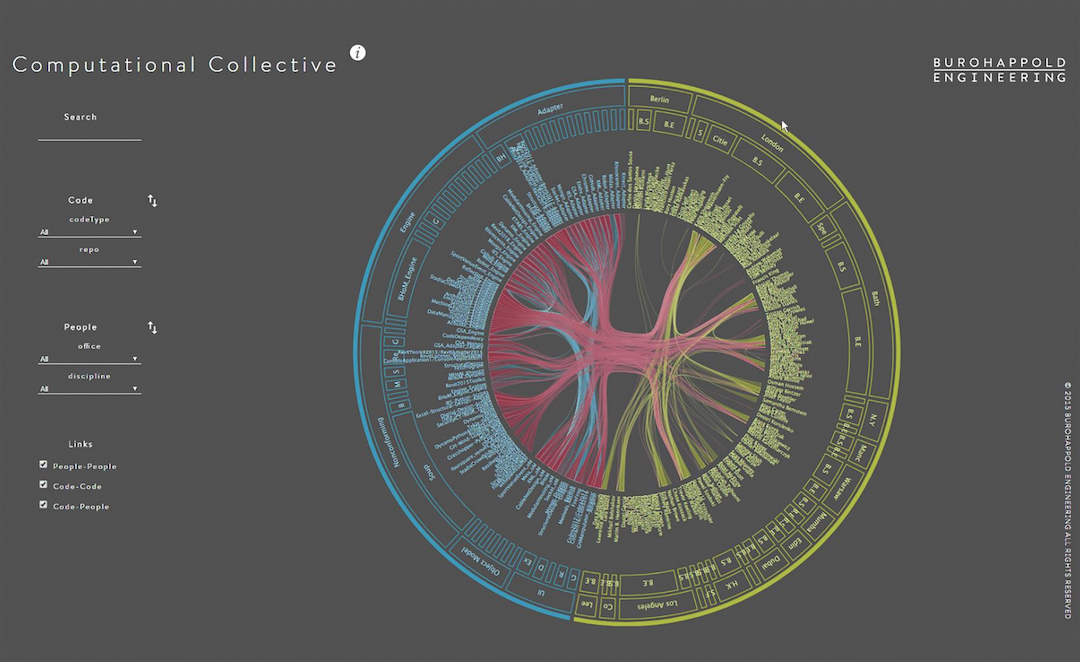Four years ago, at one of its technology gatherings, the engineering firm BuroHappold concluded that “we weren’t connected enough as a company,” recalls Craig Schwitter, PE, a Partner who has been with the firm since 1992 and leads its multidisciplinary projects.
To take advantage of available communications tools, Buro Happold formed its Computational Collective, which Schwitter says presents the firm’s employees with “a different way of thinking and working.”
Buro Happold's feedback loop
The Collective now has 400 members across all of the firm’s practices and offices. “It’s a way of democratizing technology, and all you have to do to be in the Collective is to contribute to it,” says Schwitter.
Where the Collective is about encouraging employees to interact, BuroHappold has also recently established a data exchange framework BHoM (for Buildings & Habitats object Model), which Schwitter says emerged from the Collective and allows for practical interfaces among teams. Last year, the firm unveiled its open-source website, BHoM.xyz.
BuroHappold has been moving in this collaborative direction for a while. One of its recent signature projects—the 1.4 million-sf retail and lifestyle complex at Jewel Changi Airport in Singapore, with its 131-foot-tall indoor rain vortex that pours from an oculus within a glass-domed roof—required the engagement of several of the firm’s offices, including New York, Boston, London, and Hong Kong. Schwitter agrees that this project could be viewed as a precursor to the Collective.
SEE ALSO: Clayco seeks the cutting edge as a competitive advantage
The ultimate goal of these changes, he says, is a process for tracking, measuring, and predicting human behavior for the purpose of designing and engineering better buildings. “How do you measure happiness, wellness? We see a future where we can measure the human experience. That’s like a light bulb going off for an engineer, and it’s a very motivating concept for me. But without data, we wouldn’t be able to even ask these questions.”
Innovations include digital twins for hospitals
Schwitter says BuroHappold is “very close” to being able to create digital twins for hospitals and other building types that incorporate human behavioral data. And one of Schwitter’s colleagues, Wolf Mangelsdorf, a Group Director and Partner with the firm, has formulated a “science of place” design strategy to multifamily housing, in what he calls “Wechselwirkungen.”
The intent is to reconcile design models and “interventions” that stem from community input with occupant and community needs, to create a continuous feedback loop that would define the criteria for deciding which design will works best.
 Craig Schwitter, PE (at left), a Partner, says the Computational Collective has changed the way people within the firm communicate and work together. Photo: Buro Happold
Craig Schwitter, PE (at left), a Partner, says the Computational Collective has changed the way people within the firm communicate and work together. Photo: Buro Happold

Related Stories
Contractors | Nov 14, 2022
U.S. construction firms lean on technology to manage growth and weather the pandemic
In 2021, Gilbane Building Company and Nextera Robotics partnered in a joint venture to develop an artificial intelligence platform utilizing a fleet of autonomous mobile robots. The platform, dubbed Didge, is designed to automate construction management, maximize reliability and safety, and minimize operational costs. This was just one of myriad examples over the past 18 months of contractor giants turning to construction technology (ConTech) to gather jobsite data, manage workers and equipment, and smooth the construction process.
Architects | Nov 10, 2022
What’s new at 173 architecture firms for 2022
More than 295 U.S. architecture and architecture-engineering (AE) firms participated in BD+C's 2022 Giants 400 survey. As part of the Giants survey process, participating firms are asked to describe their most impactful firm innovations and noteworthy company moves in the past 12 months. Here is a collection of the most compelling business and project innovations and business moves from the 2022 Architecture Giants.
40 Under 40 | Oct 19, 2022
Meet the 40 Under 40 class of 2022
Each year, the editors of Building Design+Construction honor 40 architects engineers, contractors, and real estate developers as BD+C 40 Under 40 awards winners. These AEC professionals are recognized for their career achievements, passion for the AEC profession, involvement with AEC industry organizations, and service to their communities.
Mass Timber | Aug 30, 2022
Mass timber construction in 2022: From fringe to mainstream
Two Timberlab executives discuss the market for mass timber construction and their company's marketing and manufacturing strategies. Sam Dicke, Business Development Manager, and Erica Spiritos, Director of Preconstruction, Timberlab, speak with BD+C's John Caulfield.
Daylighting | Aug 18, 2022
Lisa Heschong on 'Thermal and Visual Delight in Architecture'
Lisa Heschong, FIES, discusses her books, "Thermal Delight in Architecture" and "Visual Delight in Architecture," with BD+C's Rob Cassidy.
Laboratories | Jun 29, 2022
The "collaboratory" brings digital innovation to the classroom
The Collaboratory—a mix of collaboration and laboratory—is a networking center being designed at the University of Denver’s College of Business.
Building Materials | Jun 20, 2022
Early-stage procurement: The next evolution of the construction supply chain
Austin Commercial’s Jason Earnhardt explains why supply chain issues for the construction industry are not going to go away and how developers and owners can get ahead of project roadblocks.
Healthcare Facilities | Jun 20, 2022
Is telehealth finally mainstream?
After more than a century of development, telehealth has become a standard alternative for many types of care.
AEC Business Innovation | Jun 15, 2022
Cognitive health takes center stage in the AEC industry
Two prominent architecture firms are looking to build on the industry’s knowledge base on design’s impact on building occupant health and performance with new research efforts.
Wood | Apr 13, 2022
Mass timber: Multifamily’s next big building system
Mass timber construction experts offer advice on how to use prefabricated wood systems to help you reach for the heights with your next apartment or condominium project.

















